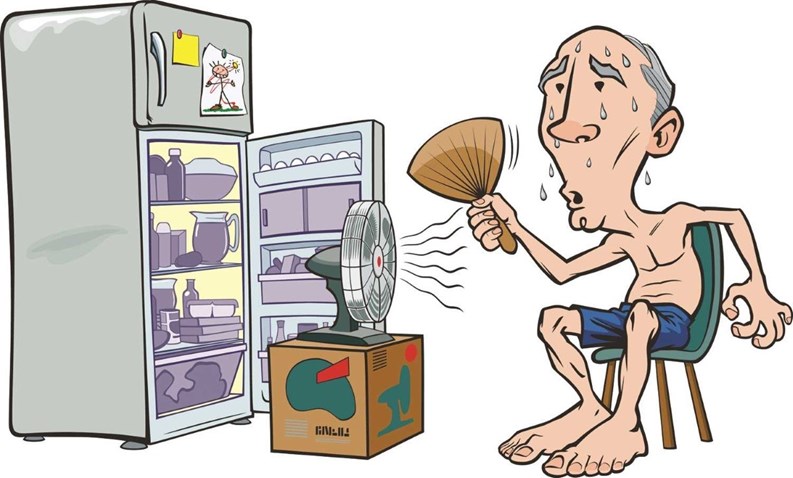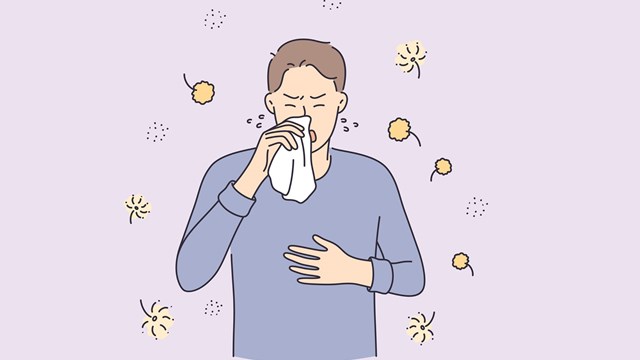A glance at a chart of average temperatures in South Florida during the summer months reveals only that it gets into the 90s during the daytime in July, August and September, and cools off at night. This belies the reality—that this “average” is compiled by periods of gorgeous summer days, as well as stretches of heat and humidity that rival the Brazilian rain forest for sheer physical discomfort.
This is because Florida is in the path of air streams from the Gulf of Mexico, which bring the humidity—and also the summer storms, some of which might be big enough to cause major damage. There’s also the matter of topography. “Florida's humid climate is attributed to the fact that no point in the state is more than 60 miles from salt water, and no more than 345 feet above sea level,” writes Dawn Henthorn of GoFlorida.com.
The swath of the state from Orlando down to Fort Myers is known as the “lightning belt,” and with good reason. “Florida is the thunderstorm capital of the United States,” Henthorn says. All summer, the threat of the sudden outburst of these storms is all too real—and can have dire consequences. “Lightning is the state's leading cause of weather-related death, and the state has the distinction of having the nation's worst record of deaths by lightning.”
And still, in a state with such powerful bolts of lightning, the heat is even more of a killer. “In Florida, more people die from excessive heat than from lightning,” Henthorn says. “The human body temperature rises dangerously when hot days combine with high relative humidity, because perspiration cannot evaporate and cool the body.”
It’s a Hot One
And in Fort Lauderdale, Boca Raton, Boyton Beach and other hotspots in South Florida, the relative humidity—a ratio of temperature to moisture in the air—is always high during the summer months. “The warmer the air becomes, the more moisture it can hold,” Henthorn explains. “Therefore, a person can feel the humidity on a warm day with 80 percent humidity than on a cold day with the same humidity.”
Because of the effects of climate change, this will only get worse, as sea levels rise and temperatures inch higher. The U.S. Environmental Protection Agency forecasts an increase in heat-related health problems. “Higher temperatures and more frequent heat waves will likely increase heat stress, respiratory illnesses, and heat-related deaths” in Florida, according to a study on Climate Change done by the EPA. “High temperatures also correlate with poor air quality and pose a risk to people with respiratory problems.”
All that, and we haven’t even mentioned hurricanes—so frequent in south Florida that the sports teams at the University of Miami use this as their name. According to an exhaustive study by the National Hurricane Center, tropical cyclones—a blanket term for hurricanes—have hit the state in every month from April through December, with “hurricane season” coming between August and October in any given year. Monroe County, which includes the Florida Keys, has the dubious distinction of being struck by more hurricanes in the last 86 years, more than any other county in the nation. This is only going to get worse as the effects of global warming intensify. Hurricane Charley, in 2004, was the strongest hurricane to make landfall in the state since the devastating Hurricane Andrew in 1992.
Clearly, the weather in South Florida—as appealing as it is most of the time—can have a negative impact on how we live. Because of that, making sure that residents are physically comfortable in their apartments is one of the primary jobs of the board and the property manager. In most of the United States, this means, first and foremost, adequate heating in the winter months. But South Florida’s mild climate, even in the winter, makes heat secondary in importance to air conditioning. While there are certainly nights when there are cold snaps, these are infrequent. It’s the heat and humidity that poses the challenge—which means the cooling systems must be well-maintained.
Crank Up the AC
Most condo complexes in South Florida are equipped with central air—but not all. Once installed, these operate seamlessly, but the trick is to maintain them properly by cleaning the systems, changing the filters and so forth. The best time to inspect and service the A/C systems is in the winter, before the heat is an issue. This is smart because it makes sure a building is prepared. Should more servicing be required, better to do it in February than August.
“In extreme heat conditions, it is critical to ensure that air conditioning/cooling components such as coils and condensate pans are maintained and that insulation is in place and in good condition for all components that need to be insulated against direct heat contact,” Doug Weinstein, director of operations and compliance for AKAM Associates, Inc., which has offices in Florida and in New York City, says. “HVAC systems should be properly balanced so that they operate at maximum efficiency. Daily inspections of the cooling systems should be made in order to detect and remedy leaks and stress fractures. Buildings also can invest in a building information system (BIS) that will allow remote monitoring and early warnings of problems.
For complexes with individual window units, it’s advised that property managers establish well-cooled places where those without A/C can bask in the frosty cool of an air conditioned room: a common area, a lobby—any spot where there is cold air conditioning cranking and a place to sit and rest. Keeping a large supply of drinking water in the building should a situation arise in which residents cannot access water easily is also a good step to take during heat waves, Weinstein says. He also recommends boards consider instituting a buddy system for residents to check on each other periodically to make sure they are faring well when temperatures reach dangerous levels.
The air conditioning is a big part of this, but not the only part. Other systems and components of buildings can feel the heat too, Weinstein says. “Florida’s hot and humid climate can exacerbate stress on, and expedite the deterioration of, mechanical systems that are maintained outdoors, such as rooftop cooling units and elevator housing,” he says. “High temperatures can cause protective coatings to deteriorate, and high humidity can attack unprotected metal.”
Additionally,” he continues, “high levels of heat and humidity can compromise roofing systems. For example, in a case where a roof has even negligible amounts of water penetration, heat and humidity will percolate the moisture, causing bubbles in the roof membrane and lead to potential membrane failure. On uninsulated roofs, constant heat will allow interior building temperatures to rise, making air conditioning/cooling equipment work at excessive levels or fail,” Weinstein says.
“Most of the roofing products we use have petroleum and heat dries out the petroleum and lessens the life span of the roof,” Gary Chester, the president of Tiger Team Roofing in Fort Lauderdale, adds. According to Chester, a white reflective roof coating is key for heat damage prevention.
“White is very reflective and has a very high reflectivity rating. They definitely will decrease the surface temperature of any roofing material and they can help save the cooling expense in the property, and help extend the life of the roofing system,” Chester says.
Extreme heat also takes a major toll on a building's exterior envelope, with heat expansion and moisture penetration breaching the integrity of the EIFS (multi-layered exterior insulation and finish systems) of a building and aggravating stucco, Weinstein says.
In times of intense heat, brutal cold, or other weather-related emergency, the role of the property manager takes on greater significance. What can be a transactional function assumes its more human side. This is never more evident, on a yearly basis, than in the dog days of summer. “The chief engineer and maintenance staff must do everything possible to maintain a livable environment and remove all possible liability from the association,” Weinstein says.
The hot summer months are when tragedies can strike—blackouts kill cooling systems, addled elderly residents accidentally turn on the heat instead of the air conditioners, those with asthma and other health problems are at their worst. This is when property managers, superintendents, and building staff can be knights in shining armor—and when residents of a condominium complex can feel like true neighbors. This cuts to the bone of what it means to manage not just a property, but a community of people who live under the same roof.
Greg Olear is a freelance writer and a frequent contributor to The South Florida Cooperator. Editorial Assistant Enjolie Esteve contributed to this article.






Leave a Comment